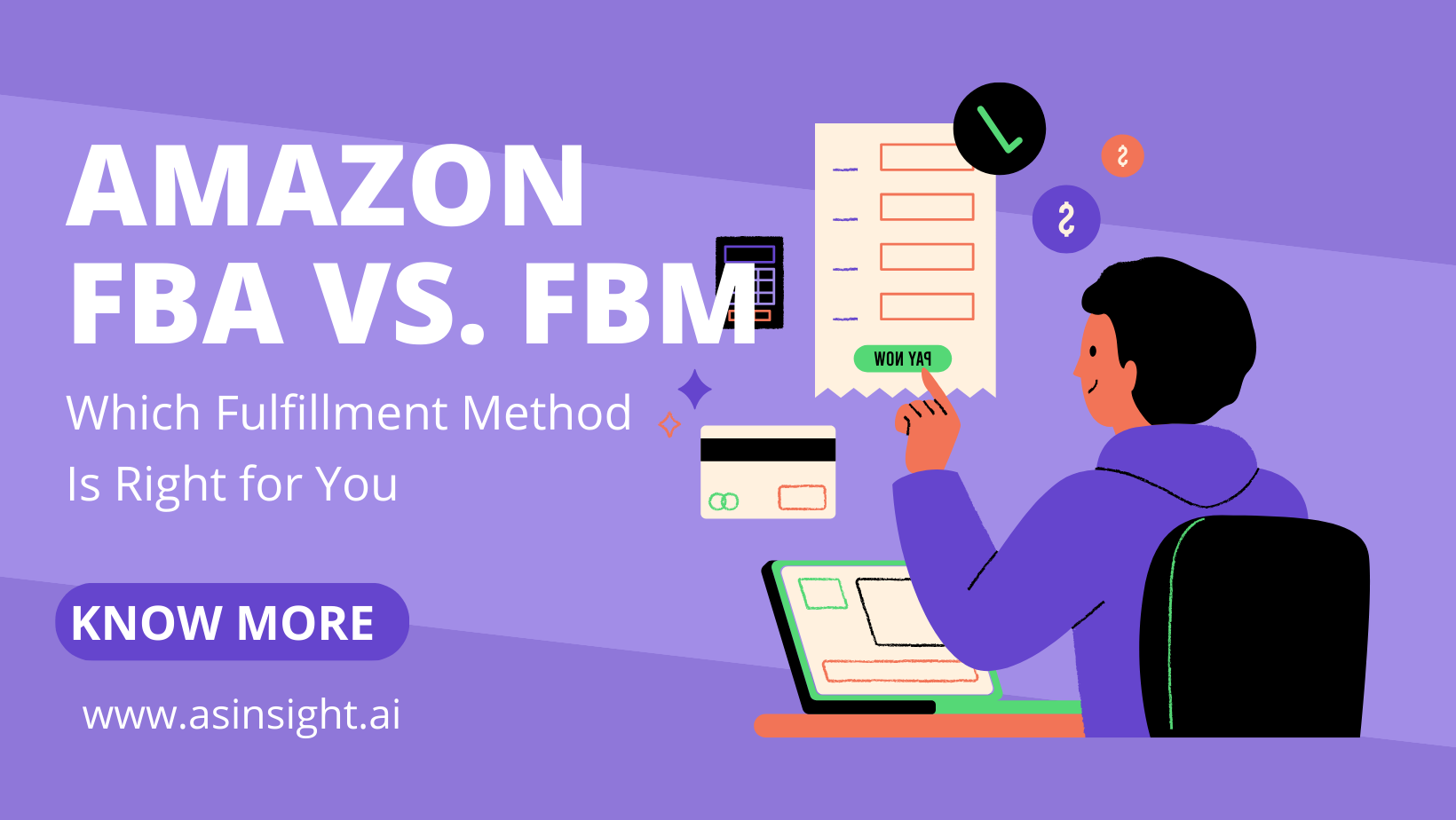Amazon FBA vs. FBM: Which Fulfillment Method Is Right for You!

When it comes to selling on Amazon, choosing the right fulfillment method is a critical decision that can profoundly impact your business. Amazon offers two primary options: Fulfillment by Amazon (FBA) and Fulfillment by Merchant (FBM). Each method has its advantages and disadvantages, and selecting the one that aligns with your business goals is crucial. In this article, we'll explore the differences between FBA and FBM and help you determine which one is the right fit for your Amazon business.
Fulfillment by Amazon (FBA)
FBA is a fulfillment method where Amazon takes care of everything, from warehousing your products to handling packing, shipping, and customer service. Here are some key points to consider:
- Prime Eligibility: FBA products are eligible for Amazon Prime, which can attract more customers due to the fast and reliable shipping options.
- Customer Trust: Buyers tend to have more confidence in products fulfilled by Amazon, as they trust the quality of service and the hassle-free return process.
- Time and Convenience: FBA can save you time and simplify order management, allowing you to focus on growing your business.
- Storage Costs: You'll incur storage fees for keeping your products in Amazon's warehouses, which can vary depending on the time of the year.
- Fulfillment Fees: Amazon charges fees for picking, packing, and shipping your products, which can impact your profit margins.
Fulfillment by Merchant (FBM)
FBM involves handling the entire fulfillment process yourself, from storage to shipping. Here are some factors to consider:
- Control: FBM gives you more control over the fulfillment process and allows you to manage inventory levels and shipping methods.
- Cost Management: You can potentially reduce fulfillment costs, as you won't incur Amazon's storage and pick-and-pack fees.
- Customization: With FBM, you can include personalized packaging and marketing materials in your shipments.
- Shipping Time: Your ability to offer fast shipping and meet customer expectations may depend on your location and logistics capabilities.
- Handling Returns: Managing returns can be more time-consuming, and you need a robust customer service system in place.
Choosing the Right Method
The decision between FBA and FBM largely depends on your business's specific circumstances, goals, and resources. Consider the following factors:
- Product Type: FBA is often preferred for products with high demand and quick turnover, while FBM may be more suitable for niche or unique items.
- Storage Needs: Evaluate your storage needs and seasonal fluctuations in demand, as they can impact your storage costs.
- Shipping Capabilities: Do you have the means to efficiently and cost-effectively manage shipping and customer service?
- Prime Eligibility: If being Prime eligible is crucial for your target audience, FBA may be the better choice.
- Cost Analysis: Calculate the total costs associated with each fulfillment method to determine which one aligns with your budget and profit goals.
- Customer Expectations: Consider the expectations of your target customers and how each method can meet their needs.
In conclusion, both FBA and FBM have their merits, and the right choice for your Amazon business depends on your unique circumstances and goals. It's essential to weigh the advantages and disadvantages carefully, and perhaps even consider a combination of both methods for different products within your Amazon store. Ultimately, making an informed decision between FBA and FBM is a crucial step in building a successful Amazon business.